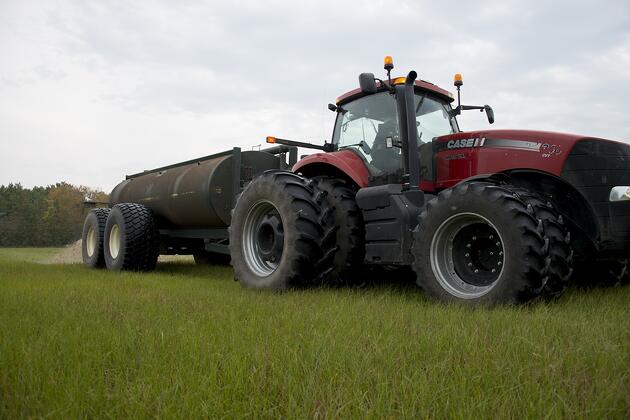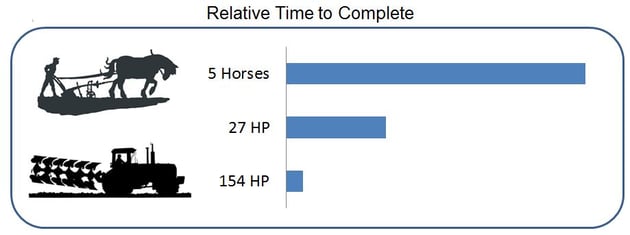How Tractors Changed Farming
In the 1920s Americans owned more than 25 million horses and mules, most of which were used as work animals on farms. By 1945, however, tractor power had surpassed animal power, and within two decades the number of mules and horses shrunk to roughly 2.5 million animals, a number that still holds true even today. Perhaps nothing has changed life on the farm more in the last hundred years than the tractor. Sorry Horses!
The ascent of the tractor brought with it the beginning of the mechanical age of farming…farmers could turn soils, carry heavier loads, and bring in their harvests in a way they never could have imagined with animals. The widespread use of the tractor had such a dramatic impact, that it’s still the backbone of the modern farm a hundred years later. Before the gasoline farm tractor, a farm grew food for two other people—today, one farm can feed as many as 130 people.

The tractor changed not only the way the land was worked, but also the crops farmers grew. Before, farmers had to devote a section of their land to growing oats for feeding their horses and mules. Gasoline tractors freed farmers from this need and allowed them to devote that space to more lucrative cash crops. In 1915, an estimated 93 million acres of cropland (27% of total harvested acres) was devoted to growing feed for horses and mules; by 1960, that acreage had dropped to 4 million.
Due to the increased efficiency and productivity tractors brought, farms became larger because farmers could now handle more land. According to Wessels Living History Farm, the time it took to plow an acre of land shrank from an hour and half using five horses to 30 minutes using a 27-horsepower tractor. Today, using a 154-horsepower tractor and a chisel plow, the job can be completed in just five minutes! Mechanization and new, more efficient farming techniques translate directly to the grain bin, too: in 1930, it took between 15 and 20 hours of labor to produce 100 bushels of corn; today a hundred bushels of corn are produced in a little over 3 hours!
Today, using a 154-horsepower tractor and a chisel plow, the job can be completed in just five minutes! Mechanization and new, more efficient farming techniques translate directly to the grain bin, too: in 1930, it took between 15 and 20 hours of labor to produce 100 bushels of corn; today a hundred bushels of corn are produced in a little over 3 hours!
The advent of the tractor also allowed for specialization in crops and livestock, which shifted the farm economy to a cash-crop model and reduced the self-sufficiency of the farm. Prior to the tractor, farmers grew crops that fed themselves and their livestock. The tractor changed this equation, as farmers now needed to sell their crops for money to purchase fuel and maintain their tractors. Relying on cash rather than an element of subsistence, they became more susceptible to financial trouble, as they were reliant on the often volatile markets for their crops and gasoline.
Tractors have become the foundation of the modern farm—they're used in the field and in the yard for everything from hauling and harvesting to seeding and spraying. The emergence of the tractor has changed the way farms look and operate over the years, as they have increased the farmers ability to maintain more land and produce crops faster and more efficiently than ever.
Just a few years after the tractor overtook the horse, our Alliance brand began making tires to help farmers get the most from their machines, and is still doing so today with tires like the unique block-tread Alliance Multiuse 550. The Alliance 550 delivers exceptional versatility and is capable of handling a multitude farm chores, while delivering superior traction, wear, smooth ride, and, of course, low total cost ownership (TCO).
The job of the tractor is never done. As manufacturers continue to develop bigger, more powerful tractors and farmers find new ways to put them to work, we will be right there creating the best possible tires for those applications and machines as they feed fuel and clothe the world!


